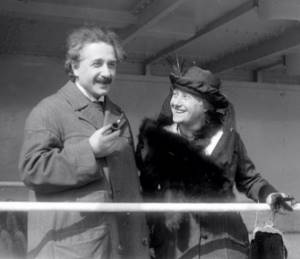Home / Family law / Marriage
Back
Published: 10/22/2016
Reading time: 9 min
0
4243
Religion and science do not approve of marriages between relatives. This is because the risk of having sick offspring is too high .
Meanwhile, history knows many facts of related marriages. They were not always concluded out of love. There were financial and geopolitical reasons for this.
- What does the law say?
- Conditions and reasons for strengthening ties between relatives
- Features of marriage
- Why is marriage between relatives considered undesirable?
- Interesting facts about consanguineous marriages in different countries and cultures
What are assortative and consanguineous marriages?
Assortative marriage is a selective close relationship between representatives of different sexes .
At the moment, the most common form of registration of relationships. Assortativity is a preference in choosing a phenotypically similar partner to create a family (positive assortativity). It may also consist in concluding formal relations between phenotypically different people (negative assortativity).
This can lead to deviation from panmixia, that is, randomness regarding phenotypic characteristics and equally likely to enter into close relationships. A clear indicator of negative assortative close relationships is considered to be an alliance between two red-haired people.
In this case, the probability of creating a pair between similar individuals according to many characteristics is considered much lower than expected. If the likelihood of families being formed between similar people is higher than expected, then we are talking about positive assortative marriages.
It should be noted that these relationships between people with a similar phenotype in terms of genetic effect are similar to those in which close relatives are. Similar phenotypes are the main factor that influences the frequency of formation of many mental pathologies and conditions.

These include schizophrenia, neuroses, alcohol abuse, mental retardation. The risk of developing such conditions is higher in patients with nosological forms.
Thus, subpopulations appear with high genotypic correlation within them and the risk of these diseases appearing in future children. For example, people suffering from mental retardation who marry people with similar health problems often give birth to children with the same defects.
Consequently, such parents give birth to more babies than individuals without any deviations. Assortative unions lead to a serious change in the frequency of certain genes in a population, which often provokes a deterioration or improvement in the viability of this population, depending on the direction of preferences.
Consanguineous marriage is a union formed between representatives of different sexes who have a common relative. Since ancient times, society has had a negative attitude towards such relationships between the sexes. Moreover, some countries oppose such marriages and they are punishable by law.
Unfortunately, in our society, incest between father and daughter, sisters and brothers is very common. Close relationships between uncles and nieces, cousins and second cousins are also not uncommon.
There are certain restrictions on this matter, both from religion and by law. Such relationships are categorically not recognized in the countries of Europe, North America and other countries that support Christian traditions. In some Muslim countries, on the contrary, such unions are desirable.
What is the true danger of consanguineous marriages? Typically, many recessive diseases are found in families where both parents are thought to be carriers of the same unwanted harmful gene. Many known recessive diseases are extremely rare.
But a completely random coincidence of carriage of one pathological defect on both sides is a very rare event. If a man and a woman who are related are married, then the likelihood of this coincidence increases sharply. This is all explained quite simply.
Consanguineous couples may have a child with various recessive diseases. In the worst case scenario, every pregnancy will end in miscarriage.
Essentially, blood relatives are people who share one, two, or more common ancestors. For example, a man and a woman have the same grandparents. As is known, a person is a carrier of at least one harmful recessive gene. That is why it could be passed on to both grandchildren. Therefore, they will be its carriers.
Who has the right to file a claim?
A corresponding application to the court can be filed by a spouse who did not know about the existence of family ties with the person with whom he married.
If this spouse is incapacitated, then his guardian must make such an application. The prosecutor is also given the right to go to court if he becomes aware of a marriage between close relatives.
Art. 28 of the RF IC does not contain a condition that other persons have the right to file a claim for recognition of a marriage between blood relatives. This means that if such persons, for example, parents of adult children, become aware that they have sealed their union by marriage, they should not go to court, but to the prosecutor, who will independently initiate consideration of the case in court.
The meaning of close and distant degrees of biological relationship
Depending on the number of births separating individuals from a common ancestor, the degree of kinship in family relationships is revealed. Moreover, this concept applies only to blood unions.
There are several degrees:

- this includes only fathers and mothers and the children born to them, regardless of their number and gender;
- it is established between grandchildren and grandparents;
- the third degree is characterized by great-grandparents (great-grandparents), as well as their great-grandchildren. This also includes nephews and nieces, as well as aunts and uncles;
- Cousins are included here.
Dear readers! To solve your problem right now, get a free consultation
— contact the duty lawyer in the online chat on the right or call: +7 Moscow and region.
+7 St. Petersburg and region. 8 Other regions of the Russian Federation You will not need to waste your time and nerves
- an experienced lawyer will take care of all your problems!
History of marriages between cousins

There are countless examples in history when marriages between relatives were actively practiced. Moreover, the motives for such actions were more often political or financial than love. Imperial or royal dynasties did not want to see people with other blood in their ranks. That is why marriages between brothers and sisters, aunts and nephews took place quite often, because there were not so many representatives of royal dynasties and relatives had to be married.
History also knows of cases of marriages between relatives due to family beliefs, in which it was believed that money should not leave the family. But only a small number of nationalities had such motives.
There were other reasons for such unusual marriages. Aristocratic families greatly valued their family, their surname, and the arrival of new blood meant almost the collapse of the ideal family. However, in those days a lot of children were born with mental and physical disabilities.
Is it possible to marry between relatives in Russia?

From a religious point of view, incest is prohibited, in particular by the Bible. History mentions tribes in which people entered into closely related relationships. This was due to the desire to preserve the purity of their own family.
To achieve this, it was customary to marry close relatives. Consequently, the tribe later died out, as the couples were unable to produce healthy offspring.
In many states, such unions between close relatives to varying degrees of kinship are not only not supported, but are also prohibited by law and are equated to committing a serious crime. This is due not only to physiological, but also to ethical considerations.
On the territory of the Russian Federation Art. 14 of the IC does not allow the formalization of official relations between people who are related in a direct line. In other words, the law prohibits the formalization of official relations between parents and children, as well as grandparents and grandchildren.
This information suggests that siblings, adoptive parents and adopted children cannot marry. Despite all this, no official confirmation or refutation of the presence of closely related ties is needed in the registry office.
In our country it is also prohibited to register marriages between uncles and nieces, aunts and nephews, cousins:
. Step-relatives are a type of family ties that arise when two parents enter into a second union between children from previous marriages. Half-brothers and sisters do not have a common father and mother. They are connected exclusively by family relationships, but by no means biological kinship. Accordingly, people who are not related by blood, but are half-brothers and half-sisters, have the right to enter into legal marriage. This is permissible from a legal point of view;
between stepbrother and sister- between cousins/second cousins . On the territory of Russia it is illegal to enter into intimate relationships with first and second cousins;
- between uncle and niece. In Russia, it is prohibited by current legislation to register marriages between uncles and nieces, aunts and nephews.
Is it that bad?
Recent research, however, suggests it may not be so bad. The paper, published in the journal Science, looks at genetic data from millions of online genealogy profiles. The scientists were also able to determine at what point in history, first-cousin marriage fell out of fashion, as well as the average degree of relatedness between married couples today.

Albert Einstein and his second wife (and cousin) Elsa Einstein took family marriage to a new level. They were related on both the maternal and paternal lines: their mothers were sisters and their fathers were cousins.
Although it is taboo today, cousins get married all the time. Franklin Delano Roosevelt's wife, Eleanor, was once his fifth cousin; she didn't even have to change her last name. And scientific geniuses like Albert Einstein and Charles Darwin also married their cousins. For most of human history, these unions were not considered bad or rude. But over the course of a century everything has changed. Thus, by 1950, married couples on average were more like seventh cousins
Ultimately, marrying your cousin comes with some risks. But the chances of healthy offspring increase sharply with each new distance of relationship. In second cousins, the gene share is only 6.25%, and in second cousins it is just over 3%. Seventh cousins - the average distance between modern spouses - have no significant genetic relationship at all.
Does the church prohibit unions in which the bride and groom are relatives?

The conditions for concluding marriages, which are established by current legislation and church regulations, have significant differences. Therefore, not every marriage that was registered in the registry office can be permitted by the church.
Church marriage between relatives up to the fourth degree of kinship is strictly prohibited . In other words, between brother and sister.
In addition to kinship relations, a serious prohibition on formalizing a union is the rapprochement of two clans through the union of their representatives. This is similar to blood relationship. Religion implies that upon marriage, a man and a woman become blood relatives.
They are one flesh. The so-called property relations imply that relatives also include father-in-law, son-in-law, mother-in-law, daughter-in-law, stepfather, stepdaughter, brother-in-law.
It is worth noting that religion also opposes the conclusion of a church union between godparents and godchildren. It is also prohibited for two adoptive children of the same child to formalize their relationship.
As a rule, there are no strict canonical obstacles to marriage, but at the moment permission for such a relationship is very difficult to obtain. To do this, you need to submit a petition to the ruling bishop.
Conditions and reasons for registering a marriage between relatives
At the insistence of genetic scientists, marriages between blood relatives are prohibited at the legislative level.
The Family Code of the Russian Federation also does not allow marriage between blood relatives, under any circumstances.
In this case, the basis for registering a marriage is not even the woman’s pregnancy.
In fact, marriages between relatives can be registered . After all, when submitting an application to the registry office, newlyweds are not required to confirm or deny the existing relationship.
If a couple hides the fact of their relationship, the marriage will be registered, but then it may be declared invalid.
Marriages between adoptive parents and adopted children are only allowed if the adoption is cancelled.
Why is it dangerous to marry blood relatives?

For several decades now, there has been an opinion that marriages between relatives provoke a high probability of encountering the same problem genes.
In this case, we are talking about diseases such as hemophilia, Down syndrome and other diseases.
If, with normal intimacy between two people who are not related to each other, there is a risk of having a child with congenital pathologies and mental retardation, then with consanguinity the risk increases approximately five times.
In addition, according to research by many geneticists, in consanguineous marriages the likelihood of stillbirth increases by a quarter. The risk of premature death at an early age increases by 34%. And the likelihood of deformities and other defects in fetal development increases by 50%.
Geneticists have proven a certain pattern in the frequency of pathologies, congenital diseases, mental and other abnormalities in babies born as a result of incest.
In the study of various hereditary diseases, great importance is given to consanguineous marriages. It has been proven that incest can lead to genetic mutations in the fetus, as well as degeneration of the offspring.
Geneticists' opinions on consanguineous marriages

When formalizing relations between relatives, there is a possibility of a stillbirth, a miscarriage, the appearance of chronic illnesses in children in the future, as well as delayed mental development and speech disorders.
Even a born baby may have body features: too tall or short, high or low weight. Based on these signs, one can suspect the presence of a genetic disease.
A so-called “spoiled” gene may be present in the genetic apparatus of a husband or wife. It can be dominant or recessive. Such a gene will suppress a healthy one.
A damaged section of a DNA molecule can be recessive for many generations and later become dominant. This is precisely the reason why a child gets some kind of hereditary disease.
What does annulment lead to?
If the court recognizes the marriage as invalid, then it will be considered as such from the very beginning, that is, from the day of its official registration. This means that such a union is not capable of giving rise to any legal consequences. If a marriage contract was concluded during this marriage, it is also annulled from the date of its official conclusion.
Common property earned and acquired in such a union is subject to division in equal shares, according to the Civil Code of the Russian Federation. Children born in such a marriage have the right to rely on financial support from both parents. This means that the parent who will subsequently live separately must pay child support in the manner prescribed by law.
Those spouses who, due to various life circumstances, did not and could not know about the existence of family ties with their legal spouse also have the right to count on maintenance. They can receive such maintenance based on a court decision if they are declared incapacitated and in need of maintenance from their ex-spouse. A conscientious spouse also has the right to petition to maintain the concluded marriage agreement (contract) in force.
The ban on registering consanguineous marriages does not guarantee that persons related to each other by blood ties will not create families without official registration. Unfortunately, the law does not provide for any liability for persons who violate moral and medical prohibitions on incest. This means that, by and large, even the closest relatives can freely cohabit and have offspring.











